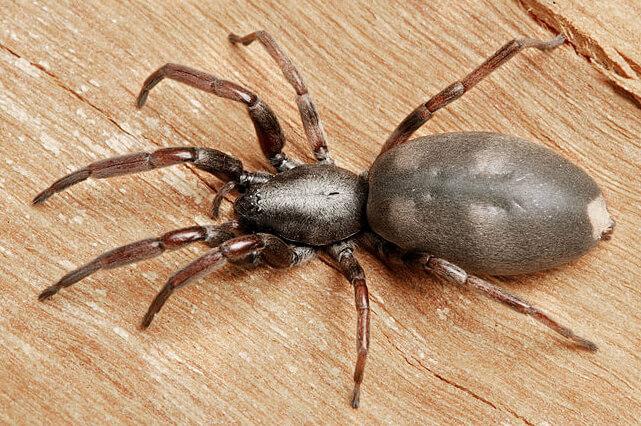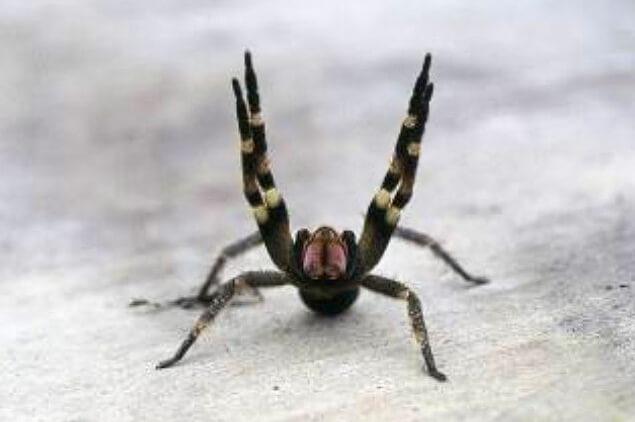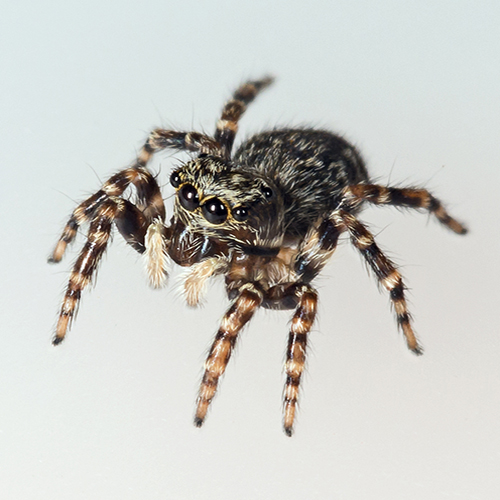Myth: But there are really deadly spiders in Australia and Brazil.
Fact: The previous myth page, where I said that no spider species anywhere can properly be called "deadly," generated more comments than any other on the site. Most were from Australians who were certain their country at least had truly deadly spiders, including the Sydney Funnelweb Spider, Atrax robustus, and the Redback Spider, Latrodectus hasselti. Some also mentioned White-tailed Spiders, genus Lampona. Some comments were from Brazilians who put forward their Phoneutria wandering spiders as the world's deadliest.
To start with, these people had misunderstood what I said. I never claimed that no human ever died from spider venom. What I said was, there is no species whose bite kills much more than 5% of its victims, nor any spider that kills within minutes, like in the movies. This applies just as strongly to Australia and Brazil as to the USA.
According to the Australian Museum, the number of human deaths from authentic spider bites of any kind in Australia since 1979 has been zero. A recent published medical study followed 750 genuine Australian spider bite cases with identified spiders over 27 months (1999-2001). Only 44 bites (6%, mostly redback spider bites) had significant effects. Only 6 redback bites and 1 Atrax bite were serious enough to need antivenom. In no case was there any sign of allergic response to spider venom, and I have only seen one such case in North America in 44 years.
Atrax robustus, the Sydney Funnelweb Spider, is often publicized as the "world's deadliest." Authentic medical information suggests otherwise. There have been no deaths (out of 30-40 bites per year) since antivenom was introduced in 1980. During the 53 year period 1927-1979 there were 13 or 14 known deaths, which would be a death rate of under one percent! Although one child died in 15 minutes, adult fatalities typically took 2-3 days. 90% of Atrax bites are judged not serious enough to need antivenom.
Most serious spider bites in Australia are from the Redback, Latrodectus hasselti, a close relative of American black widows with very similar venom and effects. The recent study mentioned above tallied 56 genuine redback bites. Only 37 (66%) had any serious effects, and only 6 (11%) were serious enough to need antivenom. There have been no redback-caused human deaths in several decades.
White-tailed spiders, Lampona cylindrata and relatives, have recently been blamed for Australian cases of severe necrotic lesions, but this connection was not based on enough evidence. The same authors who did the 750-bite study mentioned above, gathered a further 130 cases (aged 3-76 years) bitten by identified Lampona spiders. Local pain and itching were the only effects. No one developed any lesion or ulcer. White-tailed spiders are not guilty of doing any serious harm to humans; this page has more details.
Brazilian Wandering Spiders (aranhas armadeiras), Phoneutria nigriventer, P. keyserlingi and P. fera, are sometimes said to have the world's most toxic spider venom – probably based on a well publicized study where mice were killed by intravenous injection of as little as 0.006 mg of venom. Since I'm a man, not a mouse, that doesn't worry me much. Authoritative sources state that over 7,000 authentic cases of human bites from these spiders have been recorded, with only around 10 known deaths, and about 2% of cases serious enough to need antivenom. So despite the surprisingly large number of bites, this spider is not exactly public enemy number one either.
Most medical conditions blamed on spiders by physicians lack confirmation that any actual spider was involved in the case. Spider bites of all kinds are rare events (as opposed to other bites and medical conditions that get wrongly blamed on spiders). Although it is possible for a spider bite to cause death, that is a very unlikely outcome and does not happen in enough cases to justify calling any spider "deadly."
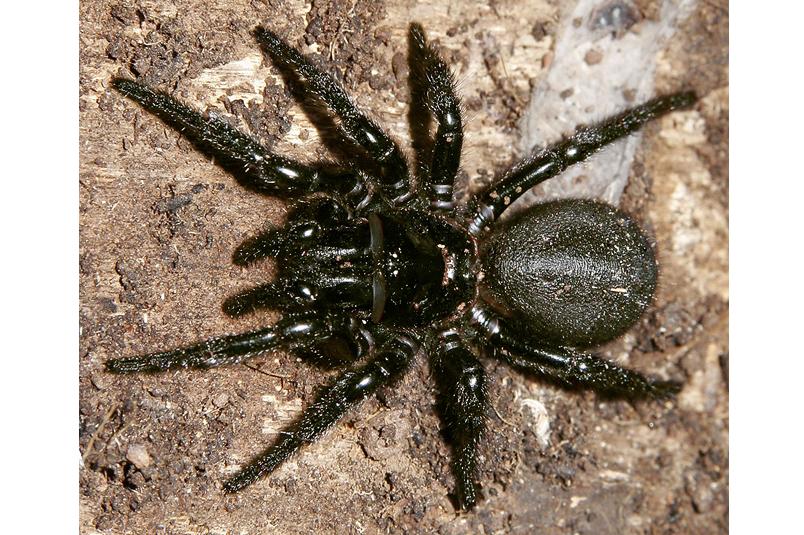
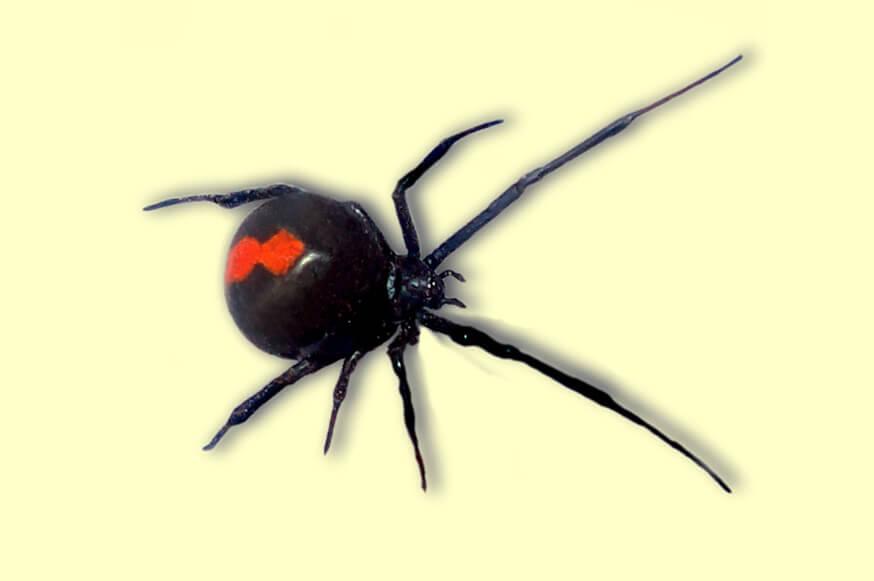 Female Australian Redback Spider, Latrodectus hasselti. Human deaths from bite are rare.
Female Australian Redback Spider, Latrodectus hasselti. Human deaths from bite are rare.